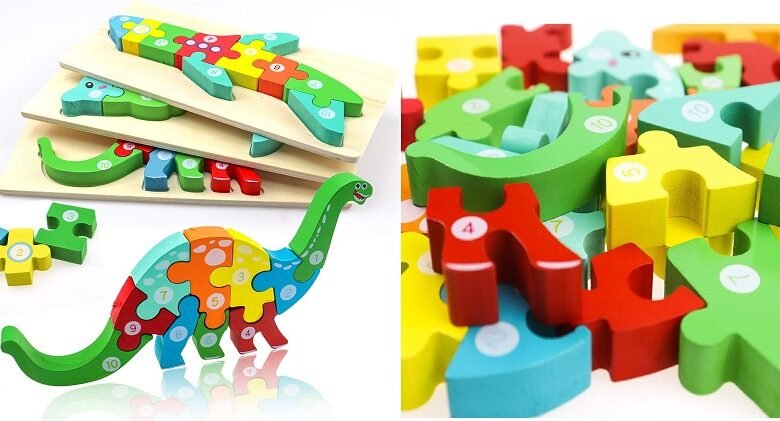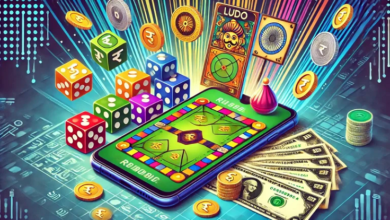Puzzle Toys for Kids: A Fun Way to Learn and Play

Puzzle toys for kids are more than just a fun pastime—they’re tools that help children develop essential skills such as problem-solving, critical thinking, and fine motor abilities. From traditional jigsaw puzzles to 3D models and shape sorters, these toys cater to a wide range of ages and interests.
In this article, we’ll explore the different types of puzzle toys, their benefits, tips and Pinterest Video Downloader for choosing the right one for your child.
Why Puzzle Toys Are Important for Children’s Development
Puzzle toys play a significant role in a child’s early cognitive development. Here’s how these toys can positively impact your child’s growth:
- Cognitive Skills: Puzzles require children to think critically and solve problems, which enhances their reasoning and logical thinking abilities.
- Fine Motor Skills: Handling small puzzle pieces improves hand-eye coordination and dexterity.
- Memory Improvement: Repeatedly working on puzzles helps children improve their short-term memory and recall patterns.
- Spatial Awareness: Puzzles, especially 3D ones, help children understand how objects fit together, improving their spatial reasoning.
- Emotional Skills: Finishing a puzzle gives children a sense of accomplishment, boosting their confidence and patience.
Types of Puzzle Toys for Kids
There are various types of puzzle toys that cater to different age groups and interests. Understanding these types will help you make an informed choice when selecting one for your child.
Jigsaw Puzzles
Jigsaw puzzles are the most traditional form of puzzle toys. They consist of pieces that need to be joined together to form a picture. These are available in different levels of difficulty, depending on the number of pieces and the complexity of the image.
Benefits:
- Helps improve visual-spatial reasoning.
- Enhances memory and concentration.
- Suitable for all ages, as you can choose puzzles with fewer pieces for younger kids and more complex ones for older children.
Shape Sorters
Shape sorters are designed for toddlers and younger children. These toys come with different geometric shapes that need to be fitted into corresponding holes.
Benefits:
- Develops fine motor skills.
- Encourages shape and color recognition.
- Perfect for introducing problem-solving at an early age.
3D Puzzles
3D puzzles are more advanced and typically for older children. They involve assembling pieces to create a three-dimensional structure, such as a building or an animal.
Benefits:
- Improves spatial awareness and planning skills.
- Boosts creativity and imagination.
- Ideal for older kids looking for a more challenging activity.
Wooden Puzzles
Wooden puzzles often feature chunky pieces, making them perfect for toddlers. They are durable, eco-friendly, and come in a variety of designs, such as animals, numbers, and letters.
Benefits:
- Durable and safe for young kids.
- Encourages early learning of numbers, letters, and animals.
- Great for developing fine motor skills and hand-eye coordination.
Puzzle Games (Digital and Physical)
Puzzle games can come in the form of apps or board games. These interactive puzzles often involve strategy and logic, perfect for children who enjoy a challenge.
Benefits:
- Enhances critical thinking and strategic planning.
- Provides social interaction when played with family or friends.
- Many games offer adjustable difficulty, making them suitable for various age groups.
How to Choose the Right Puzzle Toy for Your Child
Choosing the right puzzle toy is essential to ensure it meets your child’s developmental needs and interests. Here are some tips to consider:
Consider Your Child’s Age
The complexity of the puzzle should match your child’s age. For toddlers, simple shape sorters or wooden puzzles with fewer pieces are ideal. For older children, opt for more challenging 3D puzzles or higher-piece jigsaw puzzles.
Focus on Interests
Choose a puzzle that aligns with your child’s interests. If they love animals, select puzzles that feature animal designs. For children interested in construction, 3D building puzzles are a great choice.
Look for Durability
Especially for younger kids, it’s important to choose puzzles that are made of sturdy materials, such as wood or thick cardboard, to ensure they last.
Ensure Safety
Always check the safety standards of puzzle toys, particularly for younger children. Avoid puzzles with small pieces for toddlers to prevent choking hazards.
Educational Value
Look for puzzle toys that offer educational benefits, such as those that teach letters, numbers, or shapes, helping to enhance both cognitive and fine motor skills.
Benefits of Puzzle Toys for Kids’ Emotional and Social Development
While puzzles are often seen as solitary activities, they can also provide social and emotional benefits, especially when played in groups.
Encourages Patience and Persistence
Solving puzzles requires time and effort, which teaches children the value of persistence. It helps them understand that working through a problem step by step will lead to a solution.
Promotes Teamwork
When done in groups, puzzle-solving fosters teamwork and collaboration. Children learn to communicate and work together to complete the task.
Boosts Self-Esteem
Completing a puzzle can provide children with a sense of accomplishment, boosting their self-esteem and confidence.
FAQs About Puzzle Toys for Kids
Q1: At what age can children start using puzzle toys?
Children as young as 1 year old can start using simple puzzle toys like shape sorters or wooden puzzles. As they grow older, they can progress to more complex puzzles.
Q2: How do puzzle toys help with problem-solving skills?
Puzzle toys require children to think critically and strategically about how pieces fit together. This helps develop their problem-solving skills by encouraging them to try different approaches and learn from trial and error.
Q3: Are digital puzzle games as beneficial as physical puzzles?
Yes, digital puzzle games can offer similar cognitive and problem-solving benefits as physical puzzles. However, it’s essential to balance screen time and include hands-on puzzle activities for better motor skill development.
Q4: How can I make puzzle time more engaging for my child?
To make puzzle time more fun, you can set small goals, such as completing sections of the puzzle, or turn it into a family activity where everyone contributes to solving the puzzle.
Q5: Can puzzle toys be used for educational purposes?
Absolutely! Many puzzles are designed with educational themes, such as teaching numbers, letters, shapes, or even historical landmarks. These puzzles help make learning fun and interactive.
Lastly
Puzzle toys for kids offer a fun and educational way to improve critical cognitive and motor skills while keeping children entertained. Whether it’s a simple shape sorter for toddlers or a complex 3D puzzle for older children, the variety of options ensures there’s a perfect puzzle toy for every child.
When selecting a puzzle, remember to consider your child’s age, interests, and developmental needs. With the right puzzle toy, your child can enjoy hours of fun while developing important life skills.
Table: Age-Appropriate Puzzle Toys
| Age Group | Puzzle Type | Benefits |
| 1-2 Years | Shape Sorters, Wooden Puzzles | Fine motor skills, shape recognition, hand-eye coordination |
| 3-4 Years | Chunky Wooden Puzzles, Simple Jigsaw | Improves memory, patience, and concentration |
| 5-7 Years | Jigsaw Puzzles, Number/Alphabet Puzzles | Problem-solving, pattern recognition, educational skills |
| 8+ Years | 3D Puzzles, Complex Jigsaws | Enhances creativity, critical thinking, and spatial awareness |




